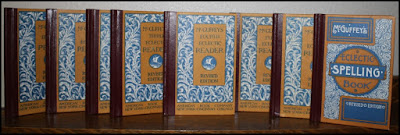Today, a road stretches from east to west across this vast land we call America. It has been called, since its inception, the National Road.
Today, it’s called Route 40 and is nicely paved, with rest stops along the way, signs directing a driver to points of interest along the way. It wasn’t always so civilized. It was once a vast forest that needed to be hacked out, and the actual road which stretches west from Maryland to Indiana was not accessible until well into the early 1800s. However, it was the road used by millions who were making the trek from the original eastern states to the west. About 620 miles long, it was begun in 1754. First major highway funded by the Federal Government. Construction began in 1811 at Cumberland, MD, over the Allegheny Mountains, through southwestern PA and on to Wheeling, WV.
Plans were to continue the road as far as St. Louis, MO, but Federal funding ran dry, and construction was halted at Vandalia, IL. Today, the full road, from east in Baltimore to west in St. Louis, was designated “The Historic National Road” in 2002.
Before the road, though, people were using waterways to traverse the area. The Ohio River was a main conduit. Lewis and Clarke set off on their Corps of Discovery expedition began on the Monongahela River, which merges with the Ohio and Allegheny Rivers at Pittsburgh. So technically, their voyage did not set out from St. Louis, as is claimed. It starts much farther east.
Let me take you back to the year 1754 for a moment. The Ohio River Valley was a vast wilderness and was considered the western frontier of the United States. The country was divided up between the English, the French and the Spanish. Settlers on the east coast wanted more land to settle, and wished to move west. But the land was harsh and lawless. A young major named George Washington was sent on a diplomatic mission by the governor of Virginia, Robert Dinwiddie. The French, with whom he was meeting, politely told Major Washington they were not giving up their territory, which spread from the Great Lakes to New Orleans. Dinwiddie needed to put boots on the ground, and quickly, if Americans had any hope of expansion beyond the east coast. In March, 1754, A fort was erected in The Forks, which is better known today as Pittsburgh. In April of that year, Dinwiddie sent George Washington out with orders to make the fort secure, and to build up supplies. As part of his mission, he was charged with building a road that could handle heavy wagon traffic and artillery.

The road did not come easily, however. The terrain was rough, mountainous and covered in woods and brush. The men building the road quickly exhausted from the strenuous labor and short rations. It took them six weeks to advance the road sixty miles, to the site of the Great Meadows, near present day Uniontown, PA. While they were camped out there, Washington got word the French were advancing upon his crew. Lt. Colonel Washington decided to take the battle to the French, and met their commander, Joseph Coulon de Villieers de Jumonville, after a long night of trekking with forty of his men through the dark treacherous forest. Ten French soldiers were killed, 21 were captured. Only one man under Washington’s command was killed in the encounter. At least one French soldier escaped, compromising the mission. So, without reinforcements, Washington could not attack The Forks. The French were deeply entrenched in the Ohio Valley and had the assistance of the native Indians. He needed to finish the road.
This skirmish between George Washington and Ensign Jumonville was the precursor to the French and Indian War. Washington retreated to Great Meadows and set about building a fort, which he called Fort Necessity. When the rest of the Virginia militia arrived, along with British troops from South Carolina, George once again turned his attention to the road. Most of June was spent opening a road from Fort Necessity to Gist’s Plantation, in the direction of The Forks. However, a large contingent of French advancing on Fort Necessity forced Washington to move back to the fort, where he ultimately surrendered to the French after days of heavy fighting and casualties. The French burned Fort Necessity and Washington returned back east. This was his first taste of military battle, and was good training for the upcoming Revolutionary War.
In 1755, General Edward Braddock, joined by Washington’s Virginia militia and native American Indian scouts, returned to the road, chopping their way to Fort Pitt. Their mission was to take Fort Duquesne from the French. The fort was strategically placed at the confluence of the Ohio River with the Allegheny and the Monongahela. The going was rough, however, and the French got wind of the project. They attacked the road workers and mortally wounded General Braddock.
Work on the road west continued during the seven-year long French and Indian War. This first-funded Federal road was partly responsible for the Revolutionary War, as the British tried to recoup some of their spent money by increasing the taxes on goods coming into the country. Following the Revolutionary War, work on the road continued, sanctioned by our nation’s third president, Thomas Jefferson. By 1818, the road stretched from Cumberland, MD to Wheeling, WV. In 1820, Congress authorized a continuation of the road to St. Louis, MO. This road eventually became the first leg of the long journey west through St. Louis and St. Joseph, MO and on to Oregon and California.
As an aside, to celebrate my birthday month, I am offering my novella, An Unconventional Courtship, for free to anyone who wants to find out how Charlotte and George Fitzpatrick met and feel in love. You can download your copy here: https://claims.prolificworks.com/free/wPvUwkuJ


.jpg)
.jpg/544px-Les_Tr%C3%A8s_Riches_Heures_du_duc_de_Berry_avril_(d%C3%A9tail).jpg)




























